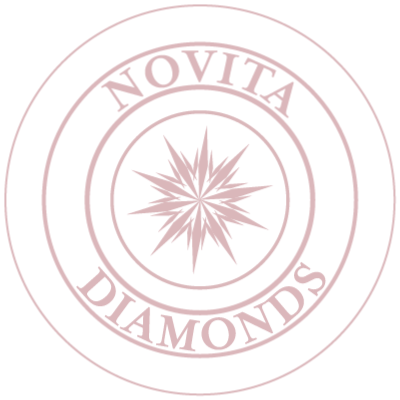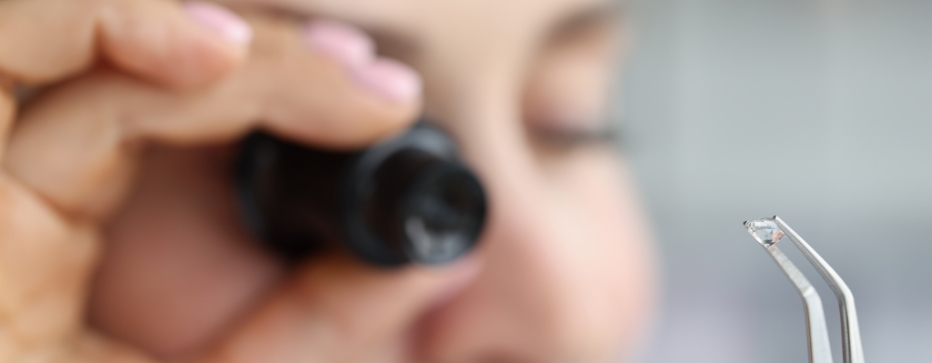BOOK AN APPOINTMENT


Since the late 1800s, scientists and engineers were fascinated by the prospect of creating a real diamond in a laboratory. However, it was nothing but a pipe dream until 1955 when General Electrics proved that it was finally possible to create a fully lab grown diamond. Nevertheless, these diamonds were far a far cry from the diamonds people were used to as they were small and of very low quality. Lab grown diamonds would continue to be of inferior stock and unsellable for a further half-century, only finding use in an industrial setting. All of that changed at the turn of the millennium, when the technology necessary to grow diamonds became advanced enough to deliver gem-quality diamonds reliably and consistently.
Over the course of millions of years, extremely high pressure and heat deep inside the earth create diamonds which over the course of thousands of years reach the surface before being mined. By replicating those conditions, a lab can speed up the process considerably to produce lab grown diamonds that are indistinguishable from mined diamonds.
It is impossible for even the most experienced gemmologist to tell the difference between a mined diamond and its lab grown counterpart because lab grown diamonds have the same molecular and chemical composition as mined diamonds, and therefore possess the same optical and physical properties. The same cannot be said of any of the knockoff diamond simulants or imitations. Let's delve a bit more into what makes a diamond truly a diamond and not an imitation. In the simplest terms, diamonds are pure carbon given a unique sold form, which is only one of the several different forms of carbon solid that can occur depending on their type of chemical bonds, known as allotropes. The crystalline form of carbon allotropes is diamonds, making them one of the only gems of a single element, typically about 99.95% carbon. The other 0.05% may include trace elements, atoms of other elements, such as boron and nitrogen, that are not essential to the chemistry or the structure of a diamond but nevertheless play a part in influencing the shape or colour of a diamond. These trace elements are naturally present in both mined diamonds and lab-grown diamonds because of their creation processes, such as radiation exposure.
A lab grown diamond's only difference from a mined one is its price, and that is not a small difference at that. The cost of lab grown diamonds is, on average, an astonishingly 75% cheaper than mined diamonds. Contrary to misinformation intentionally spread online, the price difference is not due to a difference in quality. Instead, it results from the healthy competition between labs producing Lab grown diamonds, compared to unhealthy anti-consumer monopolies that have dominated mined diamonds for so long. When the price difference is put into perspective, a mined diamond that costs $10,000 would cost $3,000 if it was laboratory grown. This is truly a massive saving for customers.

It goes without saying that mined diamonds, like other pure elements such as copper and iron, are inherently untraceable. On the contrary, a lab grown diamond can always be traced back to the source lab that created it. The harsh reality of mined diamonds is that despite the convincing claims by the diamond companies, with reassuring terms as "clean origin" or "conflict free", the true origins of a mined diamond can never really be confirmed with any degree of certainty. Earth-mined diamond changes hands at least 30-40 times from its extraction from the mine to its final sale, so all claims to the contrary are nothing more than marketing buzzwords to reassure customers.
Four Cs - Colour, Clarity, Cut, and Carat – are the criteria used to grade all diamonds. This grading system was first created by Robert M. Shipley, founder of the Gemmological Institute of America (GIA). As lab created diamonds and mined diamonds are identical, they are graded using the exact same universal grading system, the 4Cs, using identical methods and tools. It is important to reiterate that lab grown diamonds are identical to mined diamonds except for their price.
Lab grown diamonds can be graded and certified by any laboratory that deal with mined diamonds. In terms of certification, there is absolutely no difference; you will find the same type of information in both certificates. The only distinguishing text field between laboratory created diamonds and mined diamonds is the word "Laboratory Grown" or "Laboratory Created" on the certificate for clarification purposes.
Our company, as with many other young and ambitious companies across industries, is constantly grappling with the issue of ethical versus unethical in everything from the products we serve to our customers to our very business practices; the answer to this question is the fundamental reason we exclusively deal with lab grown diamonds instead of mined diamonds.
Unfortunately, diamond mining has been proven time and again to be harmful not only to the environment, but also to the very people who, many of whom are forced, to mine them as well. The human cost of extracting a conflict diamond out of the ground is unfathomably enormous. Whole populations are displaced and harmed through the mining process, including miners, many of whom are enslaved people, their children, families, and the wider community. Even disregarding the human cost, mining for diamonds, or any stones for that matter, requires an unbelievable amount of earth to be cut open and sifted through. To give a rough idea of the scale of mining, a 1 carat of gem-quality diamond requires the digging up of 250 tonnes of dirt/ore. When mountains are blown up and dug up for the sake of finding a small stone, whole communities and ecosystems are inevitably and irrevocably destroyed.
The mining process does not only destroy the earth; it also consumes a substantial amount of energy, which is almost always derived from fossil fuels. The carbon emissions from this industry are immense and almost always underreported, if at all. In addition, a variety of toxic chemicals are continuously mixed with water, often from groundwater aquifers, for use in processing ores and cleaning gems like diamonds. The toxic slurry is then unceremoniously dumped on the previously fertile land, thereby all but guarantying soil contamination. Essential drinking water sources like a river or a pond and, more importantly, groundwater are rendered unfit for human or animal consumption. It is not surprising then that we take the debate of Ethical versus Unethical very seriously as a young and responsible company. As such, we won't allow ourselves to participate in the destruction of the planet and its inhabitants; therefore, we are 100% committed to only provide our customers with ethical and sustainable products.

In the diamond industry, “Rough to Retail” describes the entire lifecycle of a diamond. It begins with the unearthing of a mined diamond or the creation of a lab grown diamond, as a rough stone, until the final product is sold to the end consumer after entering the retail market. Lab grown diamonds and mined ones have the same From Rough to Retail since rough diamonds of either origin, lab grown or mined, are Sorted, Cut, Polished, Graded and, eventually, Certified in precisely the same way. Due to the fact that all the intervening processes and costs are the same, the “Rough to Retail” process is identical for both mined and lab grown diamonds.
Interestingly, man made diamonds are more likely to achieve ideal/excellent Cut grades compared to mined diamonds. Because mined diamonds come in all shapes and sizes, they are shaped/cut to maximise their yield as much as possible, prioritising ct weight above all else. On the other hand, grown diamonds are specifically cultured to grow into the best possible shape for cutting down into gems, so they can be cut with a precision designed solely to produce the most ideal cut possible.
